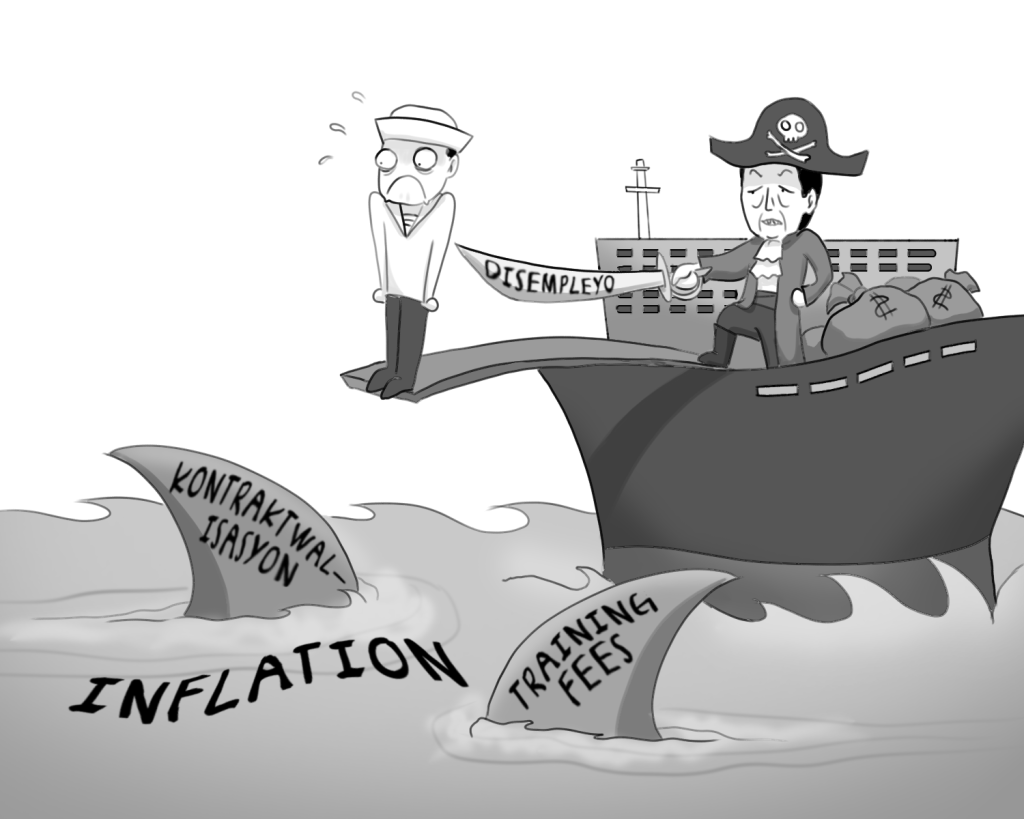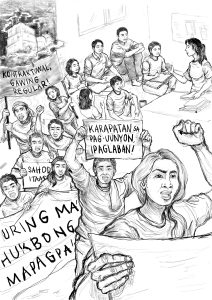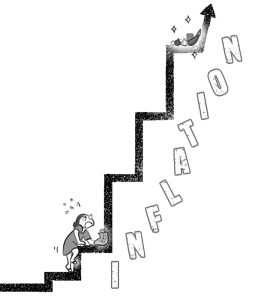Filipino seafarers face hardships caused by government


Filipino seafarers and sailors are drowning in a sea of problems. They face issues of unemployment, contractualization, exhorbitant training fees, mandatory fees and more. They are neglected by government despite the remittances they send into the country.
Estimates of the Concerned Seafarers of the Philippines (CSP) show there are at least 750,000 registered seafarers and sailors in the Philippines. Of this number, only 400,000 get to board ships with a contract with a principal or company.
The Philippines is leading supplier of seafarers around the world, according to the UN Conference on Trade and Development data in 2021. It is estimated that there is a Filipino seafarer for every four to five crew members of maritime vessels at any time.
That year, seafarers remitted $6.55 billion or nearly 21% of the country’s total $31.42 billion remittances sent home by Filipino migrant workers. The total contribution of these remittances to the country’s gross domestic product is estimated at 8.9%.
Unemployment and contractualization
It was reported recently that more than 50,000 Filipino seafarers face the danger of not being able to board European ships. This is a result of the Philippine government’s failure to raise the level of capabilities and conditions of Filipino seafarers.
There are fears that the country might fail the evaluation this year by the European Maritime Safety Agency (EMSA) regarding training standards or the International Convention on Standards of Training, Certification, and Watchkeeping for the Seafarers.
Since 2006, EMSA has repeatedly criticized the Philippines and its agencies for the low capabilities of Filipino seafarers. In 2020, the EMSA’s criticisms include lack of training equipment, inappropriate training and assessment policy, and 46 other “areas of concern.” Despite this, no significant action was carried out by the government.
According to the CSP, the main culprit behind this failure is the government’s negligence of maritime education and passing all responsibility for training seafarers to private schools. According to them, the state abandoned its role in the sector. Of the 76 universities that have a maritime program or course in the country, 58 are private.
The CSP retorted that tuition and fees for mandatory trainings set by the Commission on Higher Education (CHED) and Maritime Industry Authority (MARINA) are expensive, yet do not pass EMSA standards. At least ₱83,985 are paid by each seafarer for the mandatory trainings, apart from tuition (₱20,000-₱90,000 per year) and other educational costs.
Every year, 25,000 students graduate from maritime schools but only 5,000 of them land a job on commercial ships. If you are able to board a ship, majority are contractuals. Their work is limited to six months and they enjoy no benefits.
The salaries of low-ranking seafarers and ordinary seamen are pegged at $400 (or ₱23,200 at $1 = ₱58 exchange) per month.
The government is also milking them dry with the forced collection of PhilHealth (4% of their monthly salaries), Pag-ibig and the Social Security System which they rarely benefit from.
On top of these, the CSP criticized the government’s intensified labor export policy. According to them, due to lack of employment in the country, Filipinos are forced to work overseas.
Unity and resistance
The CSP was formed as a seafarer’s organization at the peak of the Covid-19 pandemic, during which exploitation of seafarers and sailors intensified.
In its assembly held on October 24, they strengthened their unity to assert the regularization of seafarers, provision of basic benefits, higher wages, and abolition of the age limit to work. They will also promote affordable education for seafarers, setting an 8-hour workday and annual leave.
The group also expressed support to the Magna Carta of Filipino Seafarers or House Bill 4438 by Rep. Arlene Brosas of Gabriela Women’s Party filed in September 2022.









